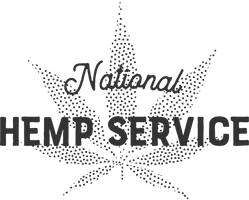A Quick History of CBD
When was CBD first discovered? Who first used CBD? What is the history of humans and hemp, cannabis and CBD? Learn answers to this and more with our guide to a Quick History of CBD!

A Quick History of CBD
CBD products can sometimes feel like a modern phenomena but in reality cannabidiol (CBD) has been around for as long as cannabis plants have graced the earth. Although CBD was only isolated less than a century ago, ancient use of cannabis is well known from its frequent appearance in artefacts and historical pollen tracing. Before diving into the scientific history of CBD, let’s take a glance at our ancestor’s cannabis consumption in BCE (a.k.a Before the Common Era, a.k.a. a long long time ago...)
BCE: Cannabis first used for therapeutic reasons

Cannabis has an extensive history of medicinal use across different cultures and time periods. Many pinpoint the exact beginnings of cannabis’ therapeutic use to Emperor Shen Neng of China in 2737 BCE.
Cannabis has been used by people since before the invention writing, when it was verbally known as "ma". Farmers grew "ma" for a variety of reasons, from pressing oil to making fibre for make rope, clothing, and paper. Piles of dried cannabis were also ritually burned at funerals for the therapeutic fumes they release, used to help calm the mourning attendees.
1800s: First scientific paper written on cannabis extracts

In 1841, an Irishman named William Brooke O’Shaughnessy noticed folk use of cannabis as a medical treatment in Calcutta.
O’Shaughnessy was so fascinated by this that he studied its use and effects. He is considered the first person to officially introduce cannabis into Western medicine via a scientific paper: in 1843, his paper titled ‘On the preparations of the indian hemp, or gunjah’ was published in The British Medical Journal (then known as The Provincial Medical Journal and Retrospect of the Medical Sciences).
One leading lady in the history of CBD is Queen Victoria of the United Kingdom of Great Britain and Ireland, who reigned from 1837 to 1901. The Queen was given CBD-rich varieties of cannabis oil to treat menstrual cramps. Her private doctor, Sir J. Russel Reynolds, wrote "when pure and administered carefully, cannabis tinctures are one of the most valuable medicines we possess."
However, following an international drugs conference in Geneva in 1928, cannabis and its extracts were banned in the UK after unverified allegations at the conference claimed that the plant was as "dangerous as opium" and "a threat to society".
1940s: CBD isolated for the first time

CBD itself was first isolated in 1940 by Roger Adam, an American chemist affiliated with the University of Illinois. Adams’ enthusiasm for his discovery was not met with support from all corners. Harry Anslinger, the founder and first ever commissioner of the U.S. Treasury Department's Federal Bureau of Narcotics, admonished Adams for his outspoken defence of the pleasant effects of cannabis.
Adams’ botanical boldness and brilliance were a family tradition; he was a direct descendant of John Adams, America’s second president and an ardent proponent of hemp.
1960's: CBD synthesised for the first time

The next major advance in the science behind CBD came in the 1960's from Dr. Raphael Mechoulam, the Israeli chemist who first identified CBD’s stereochemistry. His lab discovered the structure and arrangement of CBD in 1963 and led to a breakthrough in understanding the specific effects of individual cannabinoids.
His total synthesis of CBD, as well as other cannabinoids such as THC, is the cornerstone of the burgeoning medical-cannabis industry. Furthermore, his major contributions in the field of organic chemistry and the interaction of human and plant biology have led to the discovery of cannabinoid receptors in the human brain and the endocannabinoid system in the human body.
2010: Sativex, first formal CBD medicine approved

In 2010 Sativex became the world's first prescription cannabis medicine and the UK was the first country in the world to grant a full regulatory authorisation for the product.
Sativex contains two cannabinoids or active ingredients - CBD (cannabidiol) and THC (delta-9-tetrahydrocannabinol). It is a Oromucosal Spray which was initially approved for the treatment of spasticity due to Multiple Sclerosis (MS).
In the UK Sativex can be offered to people with moderate to severe MS-related spasticity which has not improved while taking other treatments. At the end of the trial, if their spasticity-related symptoms are reduced by at least 20%, they qualify for continued use of Sativex.
Despite this, many people who meet the medical criteria are unable to try Sativex because the local NHS group is not willing to pay for continued treatment.
2022: CBD Today
These scientific advances paved the way for the modern day's current embracing of CBD. Due to its healing properties, the demand for CBD for health and wellness purposes is high, which is the major factor driving the market currently.
The global CBD market was valued at USD 5.18 billion in 2021 and is expected to continually expand over the next decade. In addition, the rising acceptance and use of products due to government approvals is a major factor expected to boost the production of CBD-infused products.
The UN’s World Health Organisation has made several statements in favour of cannabidiol legalisation, stating that CBD should be able to be sold freely so long as it contains low levels of THC.
Even with the surge in attention to alternative cannabinoids like CBG and Delta-8-THC, CBD's versatility and effectiveness is expected to keep it as a popular choice for people looking to naturally support their health.
Want to keep learning about CBD, hemp and cannabis? Check out our other blogs!



Comments
Delta 8 drink - August 09 2023
This is not your average seltzer – it’s an extraordinary excursion into the world of flavor! Each sparkling sip is loaded with the naturally sweet, Delta 8 drink
John Butler - July 18 2022
GREAT BLOG! Lots of information I didn’t know!